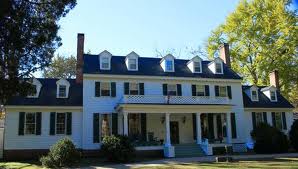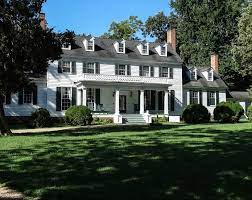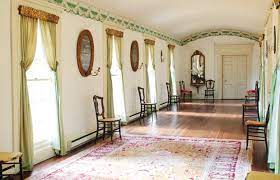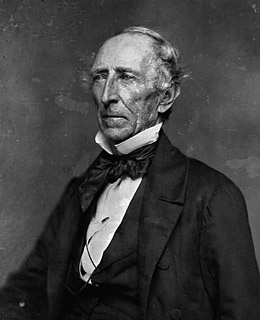Nestled in the northern part of Virginia’s Tidewater Peninsula, midway between its original capital of Williamsburg, and Richmond, its capital since 1780, is the retirement house of John Tyler, 10th President of the United States. It has been in the Tyler family since 1862.
The property dates back to 1616, and the house itself to 1720, although it went through several evolutions and owners until President John Tyler purchased it in 1842, shortly after Letitia Christian, his first wife died after a lengthy illness. It was originally called “Walnut Grove.”
It was Tyler who renamed it “Sherwood Forest,” the legendary home of Robin Hood, an English outlaw of the Middle Ages. Elected Vice President under William Henry Harrison in 1840, Tyler became President when Harrison died, only a month after their election.
The Outlaw Part
The political atmosphere of the 1820s and 30s was a convulsion of emerging philosophy and parties. The Democratic-Republicans had emerged as a dominant entity by 1800, but by the 1820s, particularly during Andrew Jackson’s administration, it was primarily called Democrats. Various factions were also gaining (and losing) support.
When the Whig Party, a motley assortment of regional and factional sectors, began taking shape, William Henry Harrison appeared to be the strongest candidate among four – all fairly weak, but poised to strengthen the next time around: 1840. John Tyler, a lifelong Virginia Democrat and supporter of states’ rights, had a credible history as legislator and congressman but he had a long-standing political antipathy to Jackson. When the Whigs approached him for support, he was amenable.
Amenable did not last long, and once the VP became POTUS, Tyler stood practically alone against the Whigs who attempted to exert more control than Tyler a) believed appropriate and b) liked. He became “a president without a party.” Thus the Outlaw, and the name for his plantation.
The New House
Tyler had always lived in Tidewater Virginia, but his wife of nearly thirty years died after a lengthy and crippling illness. He was left with seven children, the youngest only eleven. He had also become acquainted with a wealthy young New York socialite, and at 54, wished to remarry. New wife. New home.
The house itself is the longest frame house in the country: more than 300 feet, to include a 68’ long ballroom which skilled plantation laborers built with hand tool. Tyler built it in 1845, to accommodate the popular dancing craze, the Virginia Reel. The new Mrs. Tyler, née Julia Gardiner, albeit a Northerner, was an accomplished hostess who adapted effortlessly to Southern hospitality.
In addition to the ballroom, a long colonnade with a “whistling walk” connects the main house to the kitchen and laundry room, and five additional storage rooms. It follows the “modern” style of Tidewater plantations: Big House, Little House, Colonnade, Kitchen. Once the Tylers moved in 1845, Grecian-Revival style cornices, pilasters, porches and ornate architectural accoutrements were added.
Along with several dependency outbuildings, the grounds feature twenty-five acres of terraced gardens, based on the designs of Andrew Jackson Downing of New York.
Sherwood Forest Becomes a Home
The new bride Julia Gardiner Tyler was determined to take her place as a leader of society in her newly adopted state. Happily for her, the prominent families of Tidewater Virginia were welcoming to the very young Northern woman who married the President – one of their own.
With the deep Gardiner pockets, she arranged for her mother, sister and brothers, all still living in New York City, to help her furnish their new home. Wish-lists of chairs of all descriptions, tables of all sizes, fabrics and accoutrements regularly made their way to her family, and they would shop accordingly in the big city. Even Richmond, Virginia’s capital, claimed less than 30,000 inhabitants. Minuscule in comparison to New York.
Her table was a feast of nature’s bounty, all served on elegant cloth, silver tureens, trays and flatware, the finest porcelain and crystal goblets.
The Tylers entertained often, taking their turns to host the barbecues and dances common to their social set. They traveled regularly to the fashionable waterholes. With their property abutting the James River, the steamship between Richmond and the Chesapeake Bay stopped regularly to take them to events in Williamsburg or Norfolk.
In addition to their new home, the Tylers welcomed seven more little Tylers before the Civil War wreaked havoc on the country. This included the death of John Tyler at 71, only a year after their last child was born.
It also wreaked havoc to Sherwood Forest itself. Once Julia and the children finally vacated their home to take refuge with her mother in New York, the plantation was left to the mercy of marauding soldiers – and deserters. While it was never burned (although a small fire was detected and quenched by some loyal servants), it had been badly vandalized, and the fields and gardens were left in ruins.
When Julia and her children were able to return, her own finances had become precarious, and far too much for her to repair/recreate the estate’s former glory. That part took years – and future generations. Her grandson (at this writing, still living and well into his nineties), was the last Tyler resident.
The grounds are open to the public. The house itself is lovingly cared for via a Family Foundation, and open by appointment only.
It is well worth seeing.
Sources:
Seager, Robert III – And Tyler Too, McGraw Hill, 1963
https://www.whitehouse.gov/about-the-white-house/presidents/john-tyler








